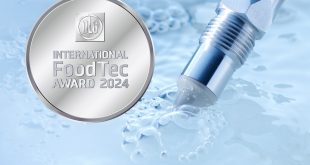 Apart from mainstream applications in mechanical and electrical engineering, building and industry, thermal imaging is making headway into areas like law enforcement, medical and veterinary care, firefighting and wildlife preservation too. Barry Atkins, managing director of PASS, looks at the key manufacturers of thermal cameras and their applications.
Apart from mainstream applications in mechanical and electrical engineering, building and industry, thermal imaging is making headway into areas like law enforcement, medical and veterinary care, firefighting and wildlife preservation too. Barry Atkins, managing director of PASS, looks at the key manufacturers of thermal cameras and their applications.
The top players in the thermal imaging market are Chauvin Arnoux, CorDEX, FLIR, Fluke, Guide and Testo, with cameras priced from just under £800 for an entry level FLIR E4 Thermal Camera to almost £21,000 for the latest FLIR T640 Thermal Camera.
Around 60 FLIR i3 cameras are used by mid-level vocational schools throughout the Netherlands for building inspections. Students perform building thermal inspections, looking out for cold bridges, missing insulation materials, moisture, etc.
“Students are provided with a thermal imaging camera and a visual camera,” said John Stoop, team leader at Markland College. “This way, they can compare both images and see exactly where building insulation problems are.”
The FLIR i3 has been superseded by the E4, which provides affordable, detailed thermography and enhanced thermal images thanks to MSX technology to make thermal images much clearer, filling them with detail that is usually lacking in other thermal imaging systems. The FLIR E4 also contains an auto-focusing mechanism, ensuring that thermal images can be captured without cumbersome manual focus adjustments.
Firefighting
In firefighting, a thermal camera can see through choking darkness, detect the hottest parts of a fire and even detect the body heat of trapped individuals. Many of these units are helmet-mountable as well, allowing firefighters to observe thermal vision while keeping their hands free.
For example, the Guide FireFitIR HT11 Helmet Mounted Camera provides clear and crisp thermal images for search and rescue operations, situational fire fighting, routine fire prevention and inspection.
A thermal imaging survey before sending firemen into a property allows them to plot the best course of action to tackle the blaze, allowing them to determine the fire’s starting point, potential ventilation spots and even to detect human thermal signatures.
Since a thermal camera does not detect visible but infrared light, the smoke inside a room does not register on the thermal image, allowing the detection of trapped individuals. Once a fire has been extinguished, firefighters can use thermal imaging to scan the area thoroughly to detect left-over hotspots or other heat sources that could cause a fire to reignite.
In law enforcement, thermal cameras allow police officers and security professionals to track, locate and capture criminals more efficiently in adverse weather conditions, dense foliage or woodland, as witnessed by helicopter-mounted cameras in popular reality TV shows.
Medical applications
Thermal cameras can detect human problems prior to the need to carry out invasive testing or surgery. They reveal problems such as arthritis, abnormal skin complaints and other problems by detecting hot/cold spots which may indicate problems in the person being tested.
For research into the effects of drugs, they can chart the effects of pain on a patient and determine how diseases affect their core body temperature and heat emission. For example, a thermal camera can identify victims of the SARS virus by detecting spikes in internal body heat caused by viral strains and some airports have used thermal imaging to test people passing through.
 Industrial inspection
Industrial inspection
It is possible to carry out non-contact temperature analysis of critical machinery and electrical equipment without necessitating equipment downtime. Thermal surveys measures infrared and converts the emission into a heat map showing different temperatures on machinery and the quality of these heat maps depend on which camera is used.
Thermal sensitivity refers to temperature shifts. The higher the thermal sensitivity is, the more accurate the overall reading taken using the thermal camera will be. Emissivity is the infrared radiation given off as heat by an object.
Fluke Thermal Imaging Cameras include the Fluke Ti100, Ti200 and Ti300 which are brand new to the market, complete with wireless Fluke Connect capability which works with over 20 different Fluke test tools and allows users to identify and diagnose problems, while securely sharing data.
For further information on thermal cameras, please visit the Thermal Imaging Page at Tester.co.uk.
Instrinsically Safe Thermal Imaging
The CorDEX TC7000 Intrinsically Safe Thermal Imaging Camera allows workers to take full thermal images in hazardous areas without fear of igniting the atmosphere a petrochemical plants, explosive dust areas such as that found in sugar production, grain storage and handling, and several underground mining applications. As it stands, CorDEX claims the only way to carry out thermal imaging surveys in explosive environments without the use of a TC7000 is to use an uncertified camera and a hot work permit – an approach which the company argues is generally frowned upon when safety inspections are carried out. The TC7000 is fully certified camera for explosive areas.
 Instrumentation Monthly Test | Measurement | Control
Instrumentation Monthly Test | Measurement | Control



